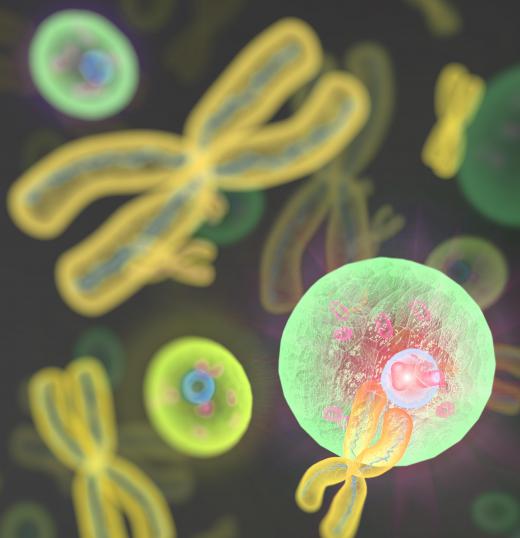What is a Chromallocyte?
 Michael Anissimov
Michael Anissimov
A chromallocyte is a lozenge-shaped mobile nanorobot, consisting of about four trillion atoms. Its purpose is to be a gene delivery vector superior to viruses (typically used today), offering a much greater degree of precision and control for the experimenter. Although the chromallocyte, designed by Robert Freitas, a pioneer in nanotechnology, has not yet been fabricated, it does seem feasible in the next few decades. Scientists have already designed MEMS (microelectromechanical systems) that can maneuver through the human bloodstream. NEMS (nanoelectromechanical systems) are only a matter of time.
Chromallocytes are designed to carry out all the procedures of chromosome replacement therapy. These robots would penetrate the wall of the cell, navigate to the nucleolus, remove all the chromatin content, and replace it with chromosomes custom-designed in a laboratory, using an artificial proboscis. The chromallocyte is about 5 microns long and 4 microns thick, barely small enough to fit comfortably in a cell nucleus.

Because so many diseases are caused by defective chromosomes or defective gene expression, chromosome replacement therapy of the type carried out by chromallocytes would have the potential to stop a variety of diseases, including the number one killer today, heart disease. But effectively implementing chromosome replacement therapy would require many trillions of nanobots working together. To build such large numbers of such small devices, we would need a device that can engage in manufacturing to atomic precision. A number of companies and universities are currently working on efforts in this direction.

The chromallocyte is one among several medical nanorobots designed in detail by Robert Freitas. Others include the respirocyte, an artificial red blood cell, the microbiovore, an artificial white blood cell, a vasculocyte, which would clean the circulatory system, and the clottocyte, an artificial platelet to accelerate blood clotting. These are all analyzed extensively in the book Nanomedicine.
AS FEATURED ON:
AS FEATURED ON:












Discuss this Article
Post your comments